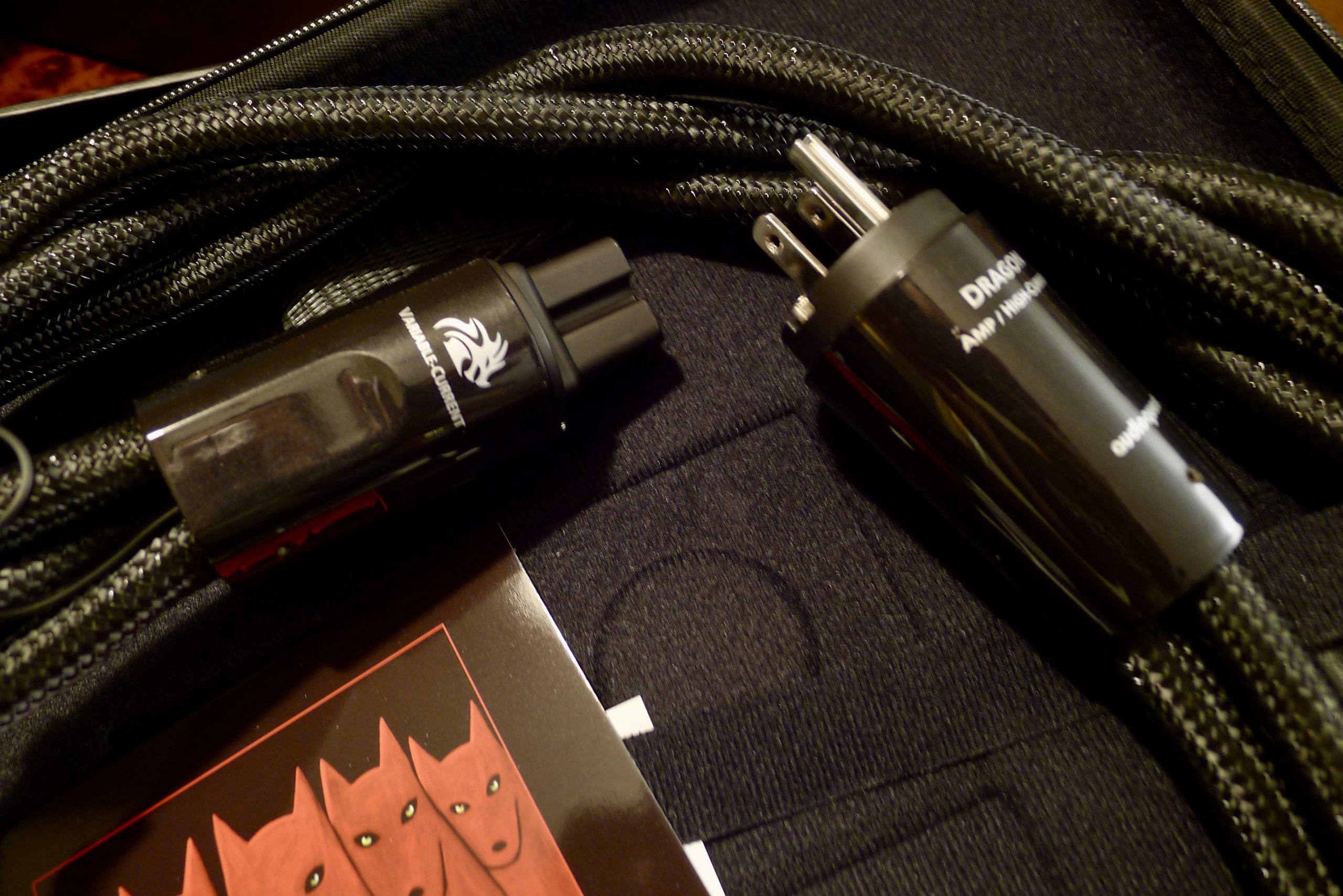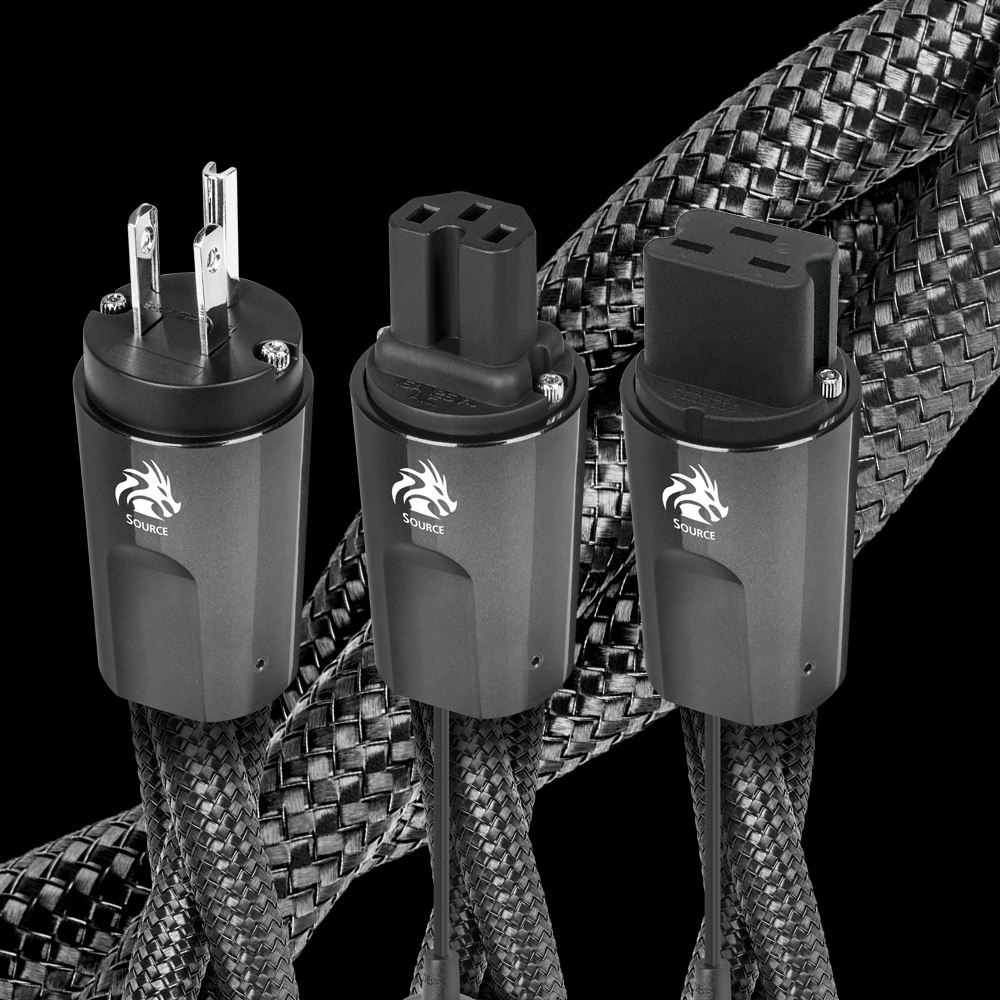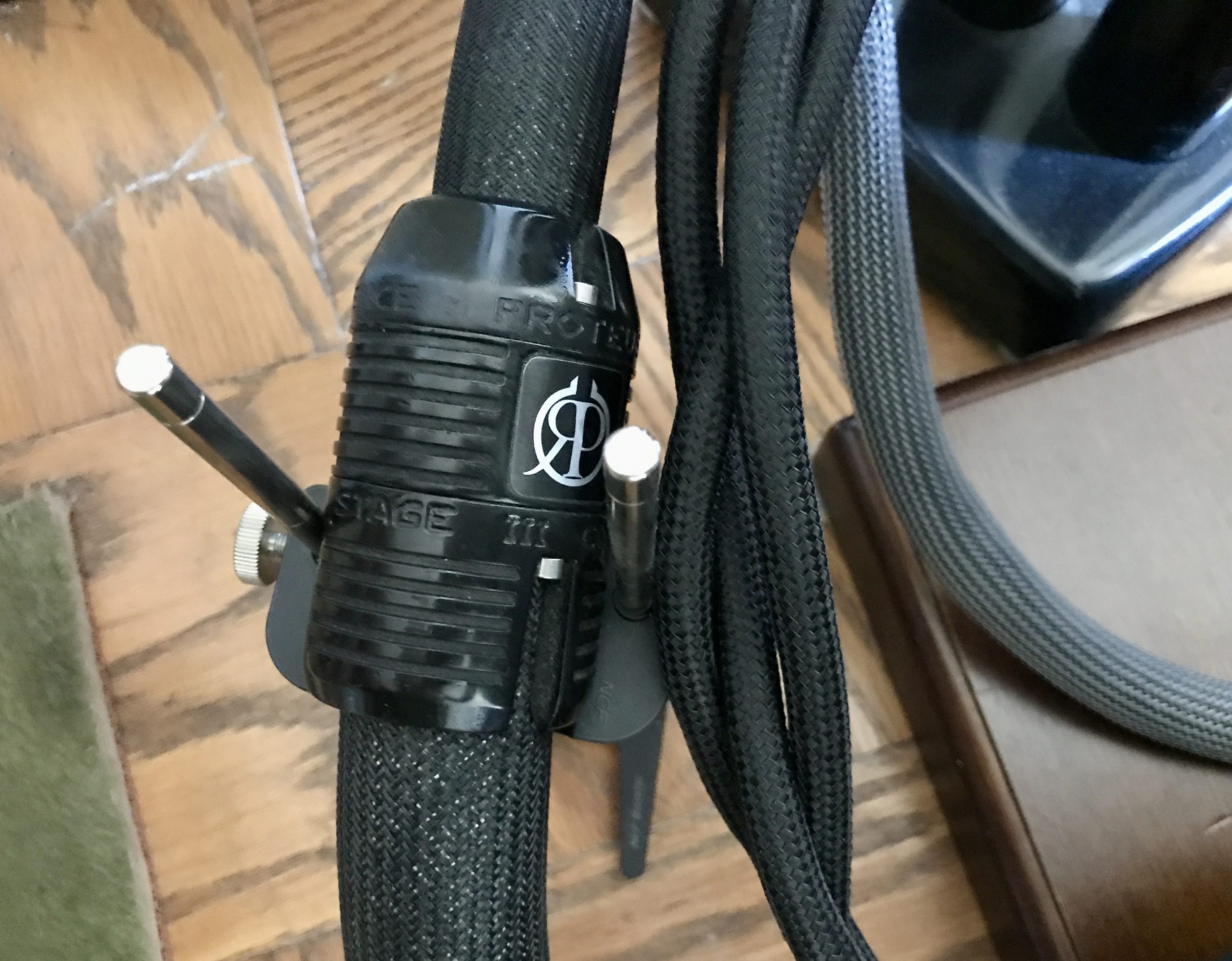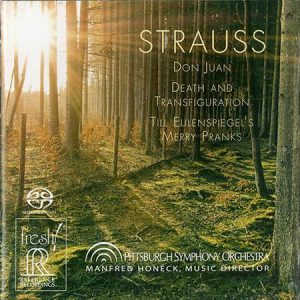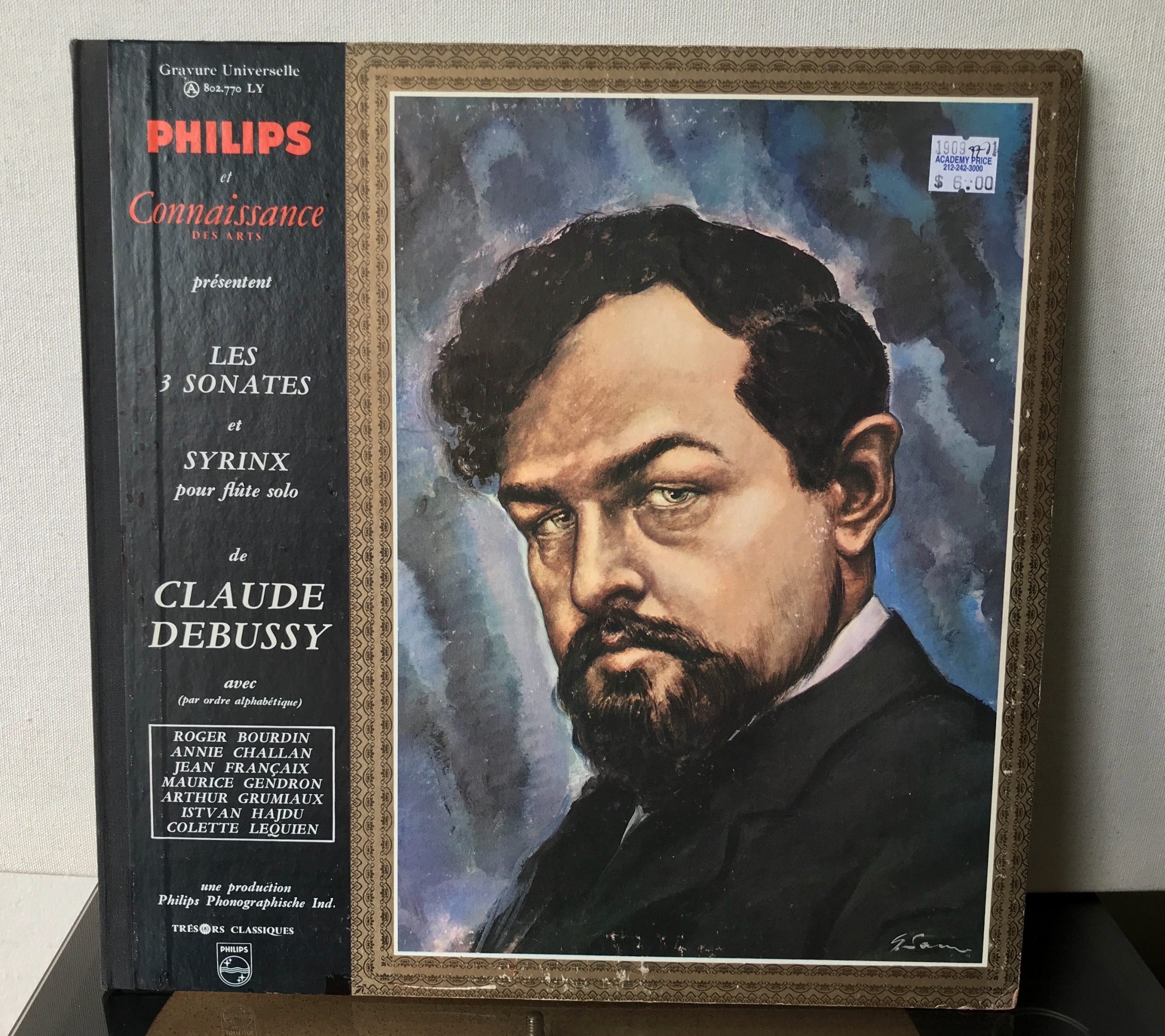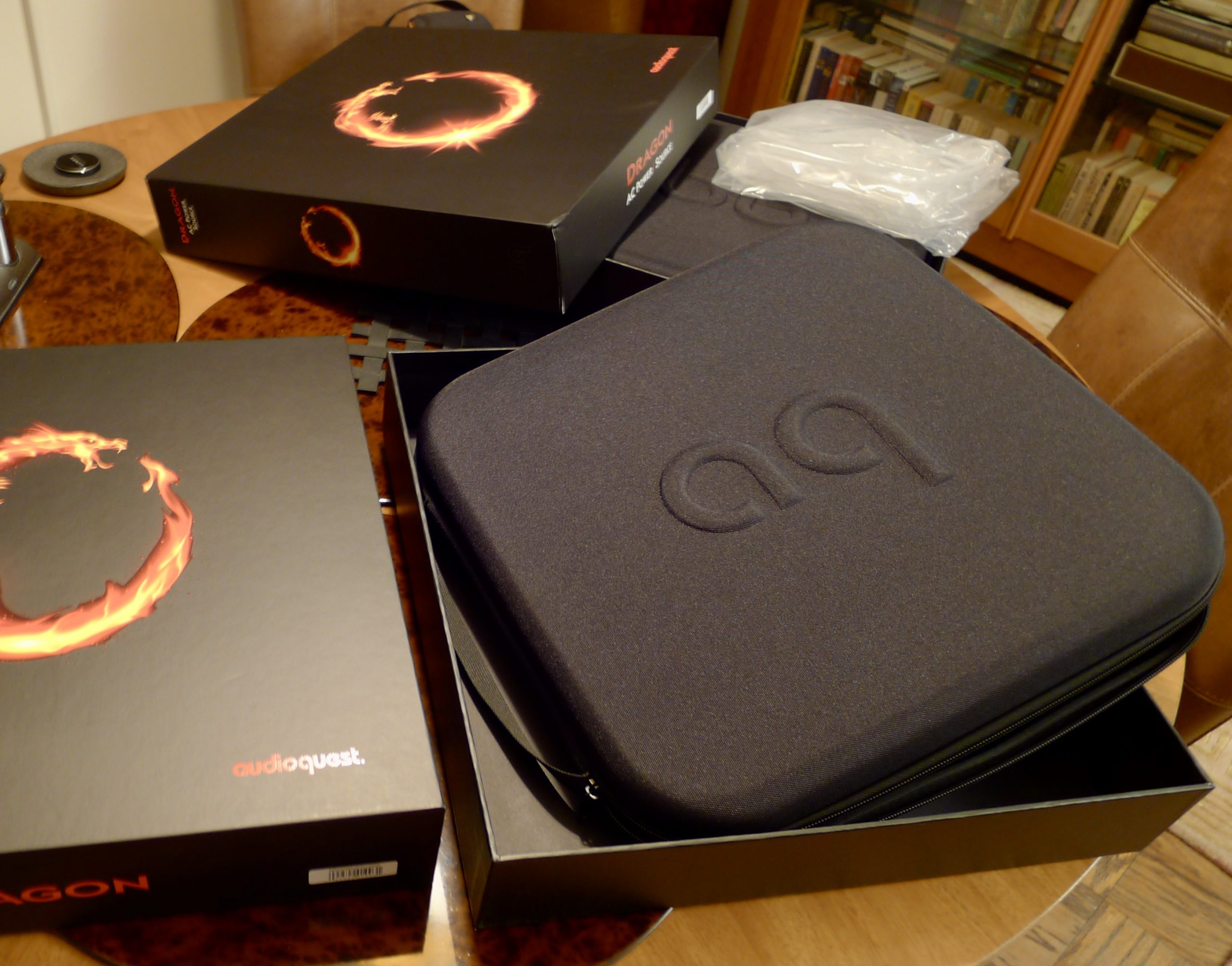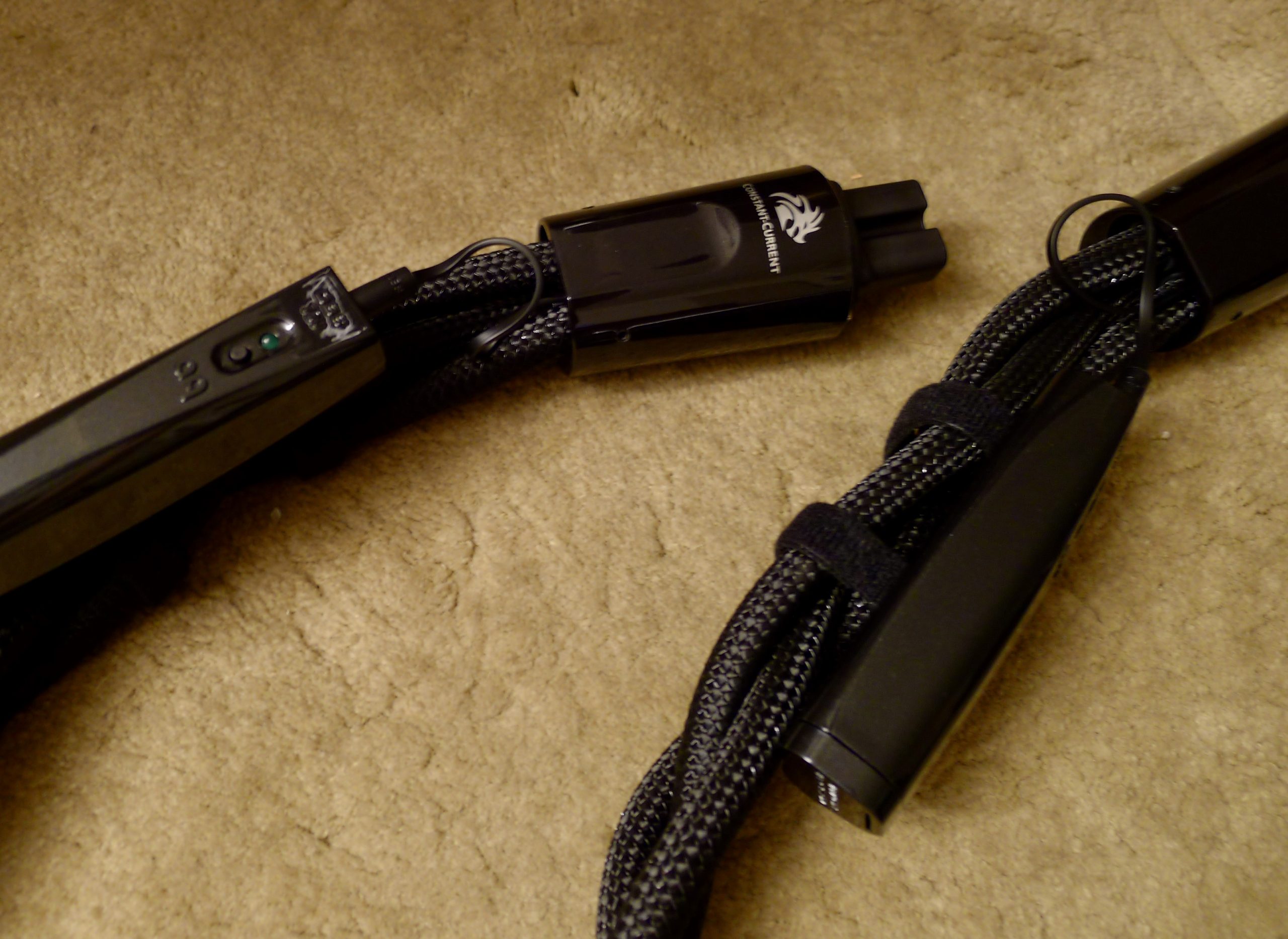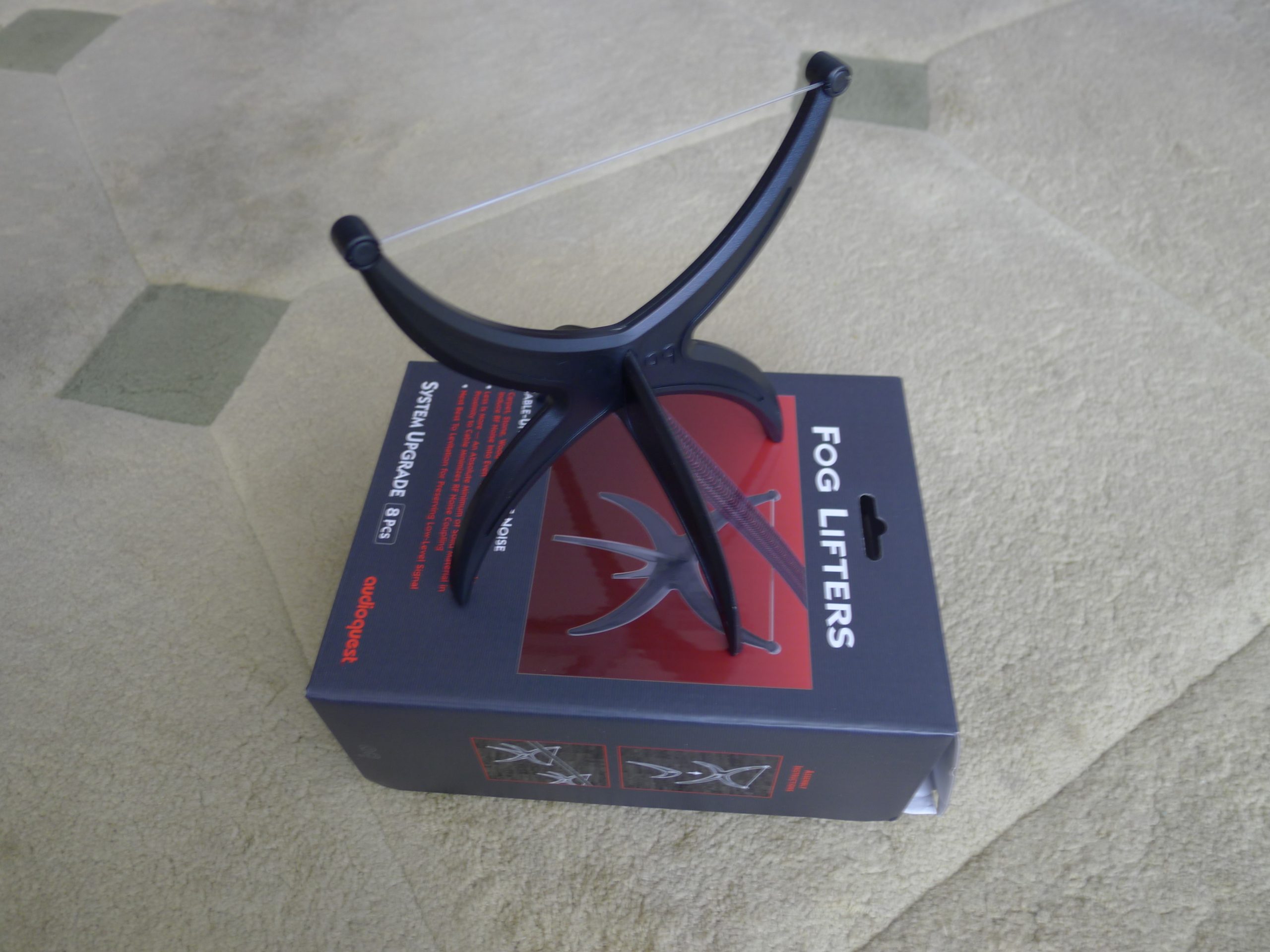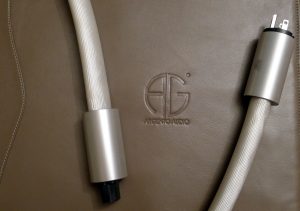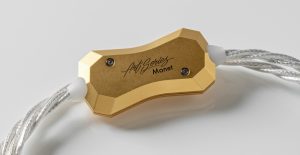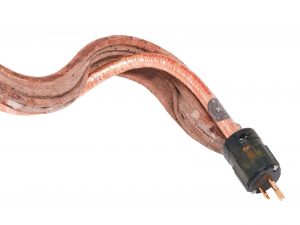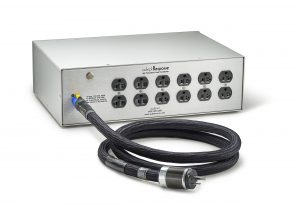I am awaiting delivery in today's post of five AudioQuest Dragon power cords with mixed emotions. The unease is not about them; it is because I'm leery of rocking the boat presently anchored in the placid oasis of audio synergy, where all parts are working and everything important to me in playback is present. From this vantage point I can even contemplate making the jump and breaking the cycle of upgrade addiction. (Pure fantasy, of course. I'm in for good, but indulge me, please.)
This talk of endgame did not happen overnight, no sir. As the years became decades in the pursuit of building my system, including umpteen hours of ear training at live events, gradual desensitization set in to the number of digits in the MSRP and the purse strings were pried open. Now I own what I consider the best—bar none. (That was made easy after being introduced to CH Precision.) Mind you, if you were to hear the rig I'm not suggesting it would cause a "fooled ya" experience, particularly with large scale forces, anyway. A single limitation remains, perhaps the biggest contributor to the sound: my room dimensions.
Returning to harbor for the purpose of a component review does not cut it, especially now in this time of pandemic with entertainment options close to nil. Consequently, I'm not tinkering around with my principal front-ends. That leaves tweaks, wires and music servers as options. This will change in due course, I'm sure.
Power Cord Rolling
I have wanted to do a power cord rotation on my amps for the longest time, but the project was always out of reach due to my floor layout. The amps are coddled with a dedicated HB Cable Design PowerStar Horizon AC power distributor positioned far off to one side in order to minimize electric field interactions. Smart idea, but it means long runs of cable, further complicated by the CH Precision M1.1 monoblocks requiring two PCs each: one with a 15 amp and another with a 20 amp plug. So, we're talking about four long, unequal runs and some non-standard terminations. Kubala•Sosna Elation! power cords have been on them since the amps were installed. It was past time to try something new.
One day, during my morning T'ai Chi routine, a vision came to me of another way. I saw the HB power distributor in a much closer placement. In a blink, I became a candidate for 2m wire runs. (Must have had really good Chi that morning.) I quickly set about lining up select reference class models.
The Replacement
You might be curious to know why the AudioQuest Dragon PC come in two versions. It has to do with the electrical neediness of Hi-fi components. AC power conditioners, power regenerators, as well as any power amplifier, have variable current demands. From the website:
"Power amplifiers present a real challenge… as the transient current requirements (though short in duration) can be many times that of the average (RMS) current consumption. Power amplifiers are also unique from all other components in that the current draw is dynamic, not constant, and it changes with volume and audio signal content."
Components such as a preamp or DAC, on the other hand, present a constant load. The Dragon Source model is designed for these; the Dragon High Current model is designed for components with variable current demands. It is important to note that installing an HC model on a front-end component would not be optimum and likely sound worse. Likewise, installing a Source model on a variable load could restrict dynamics and might even be dangerous.
Both Dragon models use Solid Perfect-Surface Silver (PSS) conductors; the HC also uses Perfect-Surface Copper + (PSC+). The geometry of the HC positive and negative legs have three solid core conductors each, and six wires for the ground. The Source has one conductor for positive and negative and two wires for the ground.
Five Dragon PCs were installed in an "optimized configuration." That meant a Dragon HC to the 20 amp circuit of each CH M1.1 (which is connected to the huge transformer and power supply that feeds the output devices in the M1.1). A Dragon Source went to the 15 amp circuit (which is connected to the power supply that feeds the input devices, control circuitry and front panel display). Lastly, a Dragon HC with 15 amp plug went from the wall to the HB power distributor. The MSRP on the five Dragon PCs summed to $45K.
The Stage III Proteus; the Dragon; the K-S Elation! PC
The five Dragons replaced the humongous Stage III Proteus PC (MSRP $15,900/2m), an unwieldy 18 lb beast so heavy that I got a Furutech NCF Cable Booster to support it, plus four K•S Elation! power cords (MSRP $2500/2m). My reference package tallies at $26K.
Where's the Boom and Sizzle?
Day one was not as expected. Whenever I see power cables split into reg and high test, I assume there'll be kick-ass bass coming down the pike.
It wasn't there. The low-end, though generous and more substantial than my reference power cord setup, did not possess the aggression designated by that accolade. What a relief! This set the stage for everything that followed. Day two had me thinking the presentation was a little too smooth, so I put the Furutech Cable Booster under the Dragon PC from the wall to add more crispness. On day three I took out the Furutech Booster. We decided, that in this situation, it was putting a ceiling on the treble and made the sound less open. It came out and stayed out.
The Dragon did not favor the low-end—or any frequency band—and that was its most outstanding characteristic. Everything was in its place with no added emphasis. There was no romanticizing of the sound with mid-bass warmth, extra bloom or air. At the same time, it was quite the opposite of lean and mean. Images were portrayed as large, high density objects, with natural borders (not etched), their zaftig flesh firm as if they'd been training at the gym.
Frequency integration was also excellent. The bass folded into the mids rather than standing apart; likewise, the treble was not heard as a separate band. It's funny how when things are done right, the way they're supposed to be, it becomes notable.
The Shape of the Note
Transients were coherent and satisfying. A cymbal crash could startle and evidence natural distortion, but the Dragon's rounded treble ensured it did not break up into brittle shards that pierce your happy mood. In fact, the cable goes out of its way to avoid harshness and always maintained a smooth surface at all frequency bands and signal levels. The sustain exposed plenty of inner life and decays tended to be of moderate to long duration, never short. With a tonal balance that did not tip to light nor dark, it was similar to my reference setup. (Which I worked hard to get to my satisfaction; the Dragons just went in and nailed it.)
You had the impression that musicians were present in the soundroom as you often get with a good system, but the illusion was neither pronounced nor created in the usual manner. Space was developed with good width and moderate, layered depth but, again, not exaggerated as it often is. Typically with audiophile systems, your minds' eye can see sculpted 3-D objects hanging in dramatic relief. The Dragon relies on the objects heavy density and very specific timbres to create a semblance of these soundstage illusions. Each instrument sounded unique and much like it ought to. I pay keen attention to timbral veracity: again, the Dragons really nailed it.
Dynamics
We spend so much time talking about macro dynamics for good reason—it tells you much about the quality of a design. Fortunately, there are many excellent components today. Cables factor in this, as they can be a choke point.
The Dragon PCs possess an incredible dynamic range that challenged the capacity of my medium-sized room. Indeed, it was so wide it could be an issue with uncompressed recordings. If I set the volume to comfortably play the quiet opening of Strauss' Til Eulenspiegel's Merry Pranks (Reference Recordings FR-707SACD), I'd be blown out when the crescendo hit a minute after. Conversely, if I set the volume to handle the crescendo, the opening ppp passage would be barely audible.
But little discussed is the counterpart. Reviews don't talk about it, but playback at the lowest signal levels is the greater challenge. Most systems sound lifeless and dull at low-levels; they need to play moderately loud to perform well. Speakers are most guilty here, but cables play a role, too. One thing my reference wires don't do so well is play the near silences. The Dragons were singularly good here.
It was delightful to observe Arthur Grumiaux navigate the ppp passages of Debussy's Sonata for Violin and Piano—such mastery, such control. These appetizing subtleties are the kind of details that make a connoisseur drool. You had to pay attention but, believe me, you were well rewarded.
Installation
The Dragon PC come in an attractive cloth-covered, hard plastic clamshell case inside a cardboard outer box. Packaging is well-designed, befitting a manufacturer with deep market penetration. Entirely dressed in black, you can't miss the three physically independent conductor runs that are braided together for the length of the cable: plus, neutral, and ground each get their own run. The Dragon is average weight, moderately flexible, not too stiff, and won't stress the components' receiving jacks. You'll note the proprietary termination plugs that grip tight. Unlike some wires, no special care is needed for installation. My Stage III Proteus PC, with its bulk and stiffness, is much more difficult to deal with.
Burn-in and the Dielectric-Bias System
As the hours accumulate during burn-in, the Dragon didn't swing from dark to light, or tight to relaxed: they show who they are right away. The cables are run through a proprietary burn-in system at the factory that cannot be reproduced in the home or at a dealership; 37 hours of run-in time that puts far more load on the cable than it is likely to see in real-world use, and puts forming pressure on the portions of the AC cable that rarely see any current in normal use (such as Earth ground).
Expect minor, incremental changes for up to four weeks as the patented Dielectric-Bias System ramps up to full efficiency. The DBS is not new, but it's an important design element used in all AudioQuest higher level wires. It also explains why a battery pack is strapped to the Dragon. Here's the (edited) gist of it:
It has long been noted that cables (and all audio components) sound better after having been left turned-on for a number of days. It has also been noted that once turned off, the component or cable slowly returns to its original uncharged state. For many music lovers, this means that they are almost never hearing their cables in an optimum state…
The Dielectric-Bias System reduces the interaction between the conductors and the insulation that surrounds it, and optimizes the dielectric at high frequency… A wire is attached from the DBS circuits cathode to the AC Line cable's shield drain (-). The anode (+) of the DBS field is an independent insulated lead that runs down the middle of the Line cable in close proximity with its primary insulators. This keeps an electrostatic charge on the critical Line insulator at all times, while the Level-X radio-frequency noise trap further aids in the cables' noise-dissipation.
AQ considers burn-in to be the process of "forming" the dielectric. The purpose of the DBS is to do it optimally. This takes time: two weeks after it is turned on will show results; four weeks are required for the dielectrics' molecules to be fully aligned. The DBS begins conditioning as soon as you pull the tab on the battery pack and continues working even if the cable is not connected to a component. This means once the dielectric achieves an optimal state it is maintained there. The next time you put the cable in it's ready to go—no more burn-in.
A Mandatory Accessory: Fog Lifters
You can turbo charge the Dragon PC's focus and precision with the addition of Fog Lifters, a new cable riser product from AudioQuest. These are simple supports designed to combat environmental RFI effects. They certainly work—it's hard to see how they have such big impact. One AQ FL under each Dragon moved the sound firmly in the direction of expressive and refined: it was like turning the focus knob so everything snapped into place. The info was always present, of course, but resided in a semi-dressed state, so to speak, hinted at when the Dragons lay on my wood floor or carpet. It just needed a little coaxing to surface. (More on the AQ FL coming soon.)
Conclusion
Everybody has their audio short list. My top slots are reserved for tone and timbre, followed by dynamics (macro and micro, in that order). From what I can tell, that differs from most lists. Audiophiles tend to be keen on dynamics, speed, low-end, with resolution trailing close behind. Tone and timbre may not even show up. In either case, finding the right power cord for you is not easy.
The Dragons do things slightly differently from what the majority of audiophiles are used to. They hit my markers at a very high level and if you're looking for boom, sizzle, and other forms of bombast, you won't find it here. That's exactly why the AudioQuest Dragon power cables tickled me. Frankly, I was amazed at how un-Hi-fi they sound. I was not expecting this kind of sophistication.
Certain components or wires are able to make the interface between the system and the ear less tense and reduce friction. As we engage in the parsing activity to make sense of these stimuli, the Dragon PCs make the task easier, and thereby make our job easier. At one point this caused me to think maybe the level of detail had been reduced, but I couldn't find any evidence of that. The comfortable ear-feel encouraged listening sessions that stretched well into the night.
The AQ Dragon power cables set the bar at the highest level. I can't wait to try the matching Dragon Speaker Cables coming soon. But right now, I'm looking at the next round of power cables waiting in the loading dock (my front hallway). It's hard to imagine them scaling to the rung occupied by the Dragon PCs.
Dragon Source (Constant Current) Power Cord
Retail: $4400/m, $7800/2m
Dragon High (Variable Current) Power Cord
Retail: $5400/m, $9800/2m
AudioQuest




